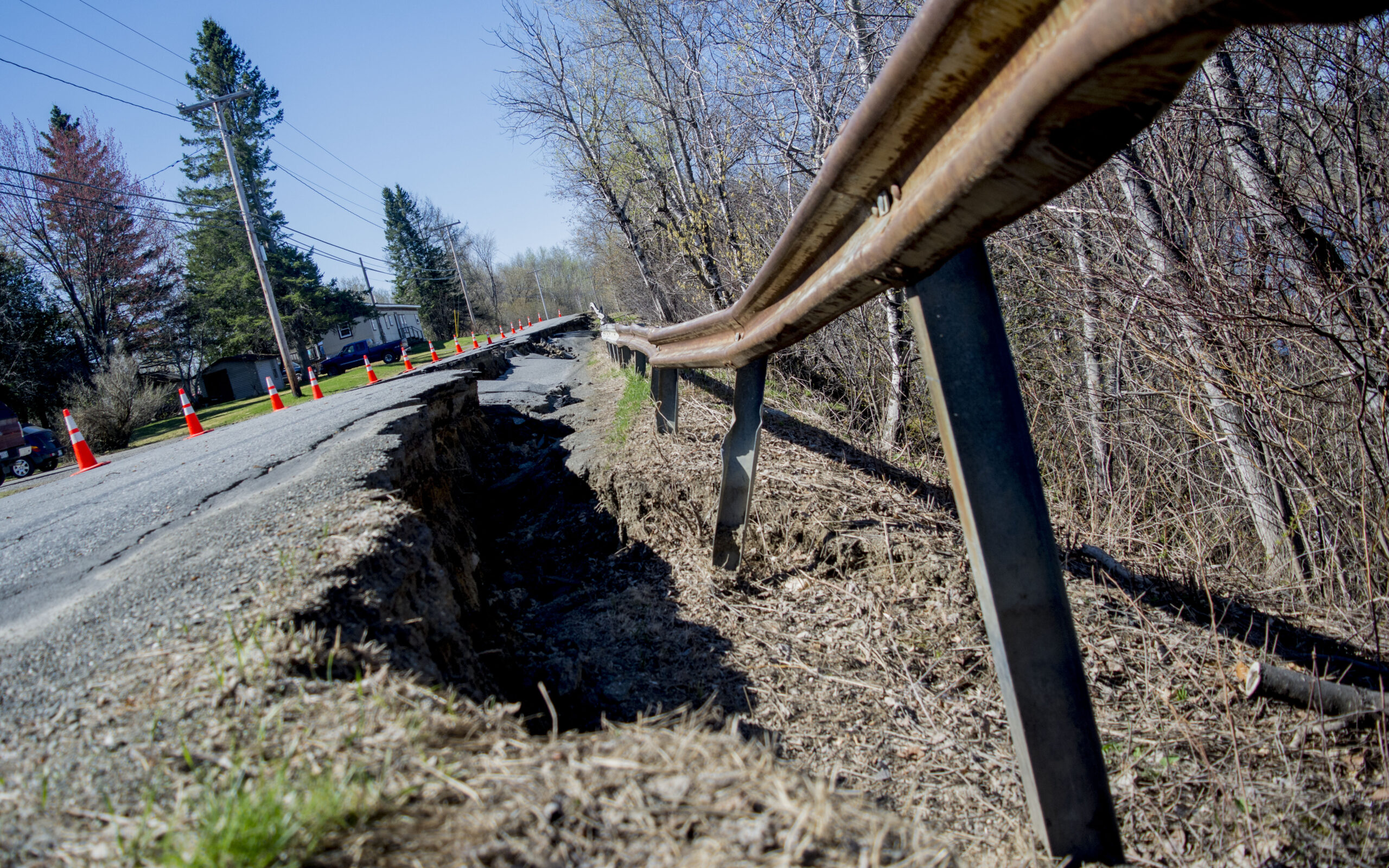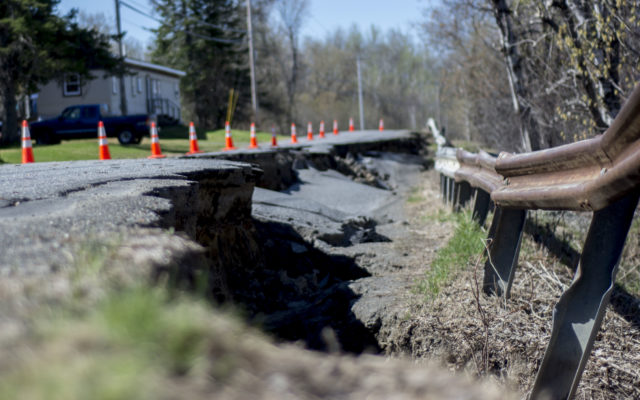
CARIBOU, Maine — Since May 8, damage to the River Road in Caribou caused by water saturated soil and spring runoff has finally begun to level off.
The road, which runs alongside the Aroostook River, began to split in late April, as many areas in the County were beginning to flood. At that point, city officials believed the rift would worsen indefinitely.
Caribou Police Chief Michael Gahagan said on May 10 that the situation had not worsened because “we’ve gone to a dryer season and it has stabilized.”
There are four residences within the dangerous quarter-mile area of the roadway that is closed off but no residents had relocated as of May 14.
Despite the dangers, police have dealt with numerous cars driving around the barricade in an effort to see the damage, which looks similar to an earthquake aftermath.
“It’s like racing your car to the edge of a cliff to see how well your brakes work,” Gahagan said.
Since a barricade is in place, the city is not technically liable for any injuries sustained by those who drive through, and people who ignore the signs could be prosecuted for trespassing.
Recently, the police had to deal with a group of individuals who walked through the barricade, the chief said.
“We chased a bunch of young adults who were in there jumping on the guard rails because they thought that was the new challenge,” Gahagan said, adding that he was working to obtain a cement jersey barrier to more effectively prevent trespassers.
Aside from falling from a great height and into the Aroostook River, Gahagan said another danger is that the damage takes up such a large portion of the road that it would not be possible to utilize emergency vehicles inside the closed off section.
The next step for Caribou is to apply for disaster aid from the Federal Emergency Management Agency. Gahagan said Caribou is working with Aroostook EMA to hire an engineer to give a rough monetary assessment of the extent of the damage not only in Caribou, but throughout Aroostook County.
Aroostook EMA Director Darren Woods said that normally the monetary damage threshold for federal disaster aid is around $265,000. However, since Aroostook is the only county impacted, he said county and local officials would have to meet Maine’s $1.9 million threshold.
“There are other things that come into factor,” Woods said. “It’s not just a number. We have to show the impact to citizens. I don’t think it’s going to be difficult but, as with anything, you apply for it and then wait and see.”
The EMA director said the entire application needs to occur within 30 days of the latest point of the disaster or, in Caribou’s case, May 8. In those 30 days, Woods said the city needs to collaborate with an engineer to collect data from all County communities and send that information to the Maine Emergency Management Agency. State EMA officials then pass along the application to Gov. Paul LePage.
If the governor approves the application, it goes to FEMA, which would send someone to do an additional assessment in the area. If that assessment meets the public assistance declaration standard, it would be sent to President Trump, and if he approves the declaration, FEMA would need to return to the County to “meet with all communities for a more detailed inspection of each site” in order to determine an accurate cost.
While the application is for a public assistance declaration, Woods said that money given to County communities would go toward infrastructure.
An engineer has not started assessing the damages in Caribou yet, but Woods said EMA’s rough estimation for the cost of repairs to the River Road alone are about $2.5 million. Damage to other roads and culverts in the rest of Aroostook County have been initially estimated at another $300,000.
Both Gahagan and Woods are urging citizens to stay away from the closed off area until damage to the road can be assessed and completely fixed.
“People should not be driving there at all,” Woods said. “The only people who should even be walking out there are the people who live in homes within the barricaded area; everyone else needs to steer clear of it. The ground is not stable, and it’s not a safe place for anyone to be.”
- A rift in the River Road in Caribou has stabilized since May 8. The deterioration began in late April when flooding and runoff from rain and melting snow saturated the soil under the roadway causing it to crack and split. Looking ahead, officials are currently seeking a FEMA declaration that would provide federal assistance to the County. (Christopher Bouchard)








